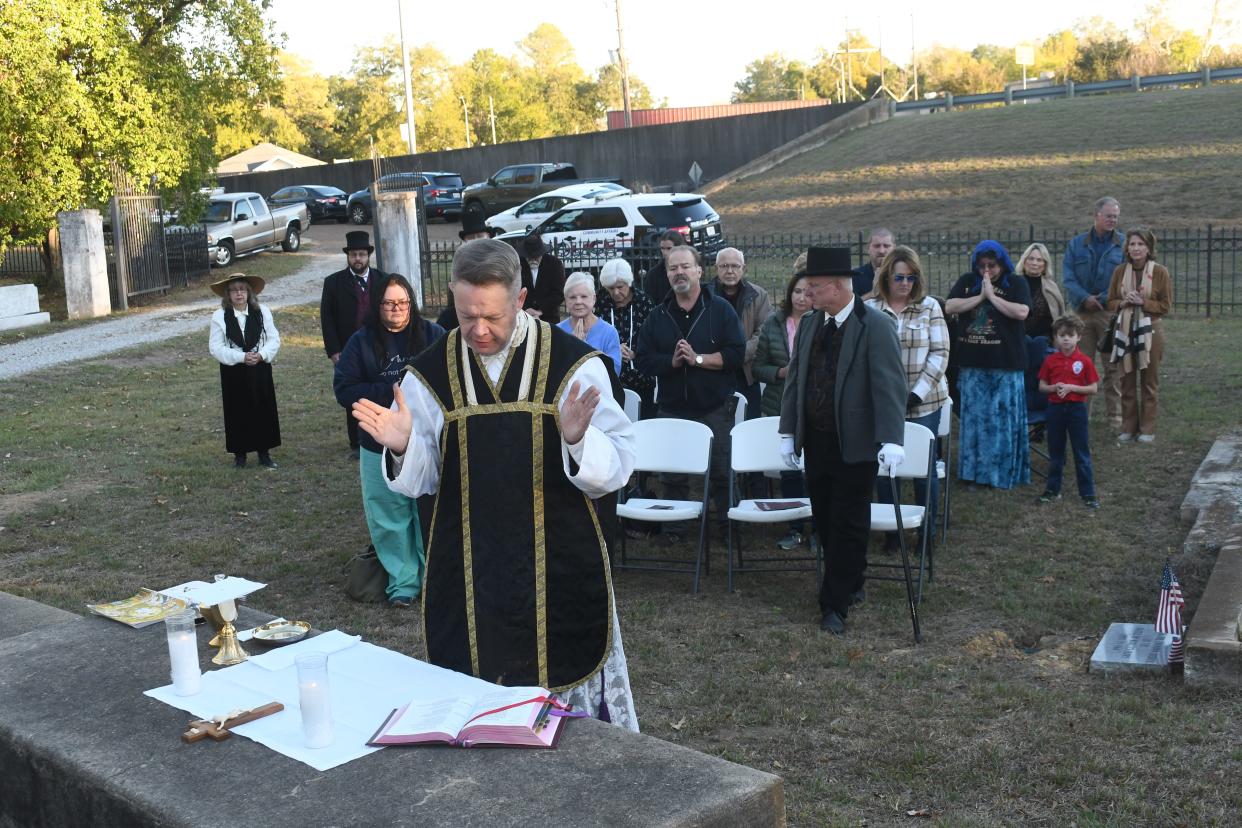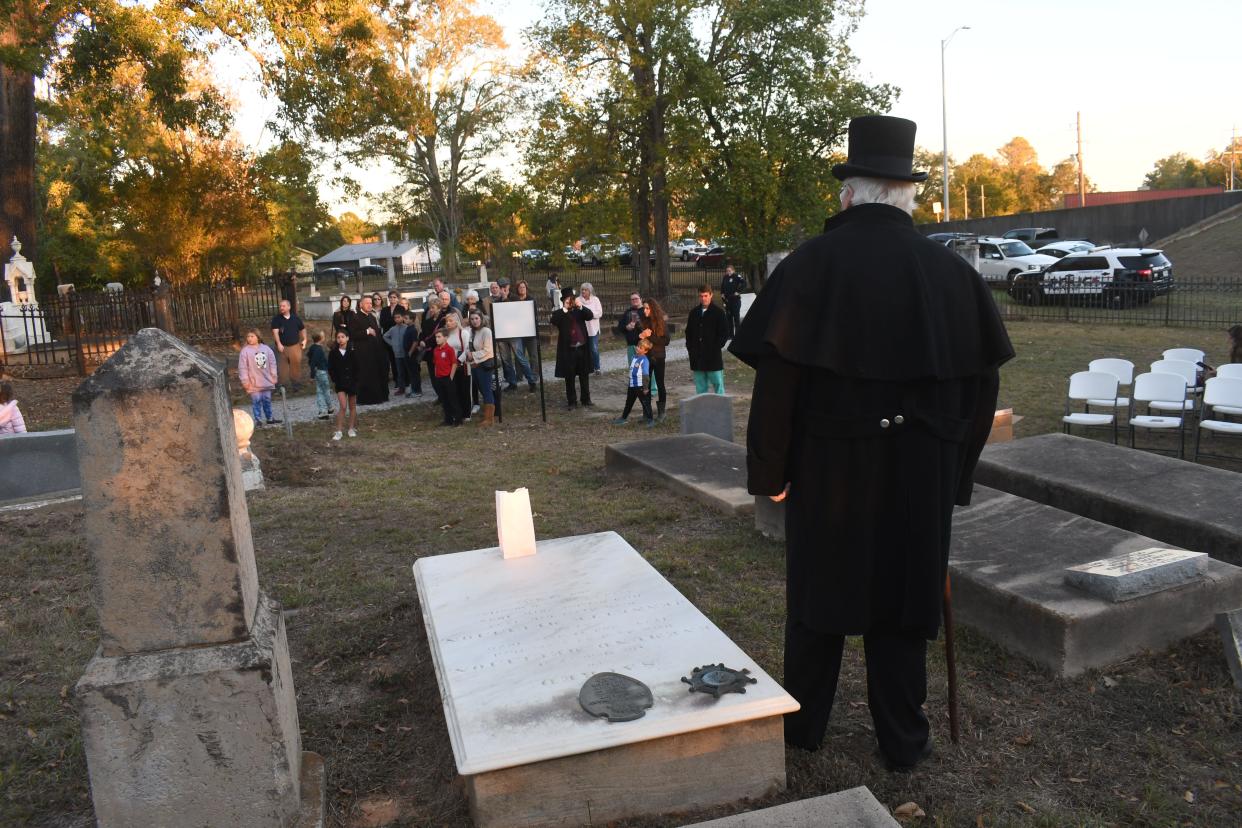Old custom returns to Old Rapides Cemetery on All Souls Day
An old custom returned the Old Rapides Cemetery in Pineville when an All Souls Day Mass was held at the site Thursday evening. The cemetery dates back over 200 years to when the territory was under Spanish rule.
On Thursday, the Historic Rapides Cemetery Preservation Society hosted the All Souls Day Mass. A historic walking tour followed where Father Chad Partain gave visitors information about prominent historical figures of the area.
“We do have costumed reenactors who will be standing by certain marked graves just to add a little hint of atmosphere,” said Partain, pastor of St. Frances Cabrini Church, who presided over the mass.
In its long history, mass would certainly have been offered at the cemetery more than once, he said.
“When this cemetery was first established in 1780, there would have been the blessing of graves when a priest was present on All Souls Day,” said Partain.
The cemetery was originally known as the Old Catholic Cemetery, said Partain.
“So certainly, I believe this celebration is nothing new for this cemetery. And what a way for us to remember this historic site,” said Partain.
All Souls Day is a festival that follows the Feast of All Saints.

“So having celebrated all the saints in heaven, the church then commemorates or remembers all of the souls of the faithful departed who might not have been perfect at the moment of their passing from this world,” he explained. “In our Catholic theology based on the Book of Revelation, where we’re told nothing defiled by sin can live in the presence of God, we believe that God has provided a place of purification after death for those souls who were not quite ready to enter into His presence. We call this purgatory. So, we pray for the dead.”
It is also an ancient custom that has its roots in the Jewish faith that was continued in the early church to pray for the dead on a particular day, Nov. 2, which was “set aside to remember all of the faithful departed.”
“In the Second Book of Maccabees, it is written that it is a good and wholesome thought to pray for the dead that they may be set free from their sins,” explained Partain.
On All Souls Day, the blessing of the graves is traditionally held and a requiem mass, or mass for the dead, is offered three times that day, said Partain.
“It’s a way for us to remember the reality of death and also to remember that charity, the great act of love, which we’re commanded to do by our Blessed Lord, is to be practiced both in life and in death,” he said. “You can’t forget that if we believe in the Resurrection of the dead, we can’t forget those who have gone before us. And so this celebration is a wonderful way for us to remember.”

After the mass, Partain took visitors on a walking tour of the cemetery where they were told the history of the cemetery and some of the people who are buried there like Edmund Meullion, the last Spanish commandant of the El Rapido District. According to the Old Rapides Cemetery Vistors Guid, “He officially represented Central Louisiana during a transfer of the area called Louisiana from Spain to France.”
They learned about Pierre Baillio II, who founded what is now known as Kent House Plantation, John Casson, one of the founders of the Central Louisiana Medical Society and Rapides Parish coroner, Sergt. John Newton, the only known Union soldier buried in the cemetery, and Miriam Hyams, who was a young victim of a steamboat disaster where 80 people died.
Partain showed them the grave of George Mason Graham, “the father of Louisiana State University.” The original site of LSU is located on the outskirts of Pineville. He took them by the gravesite of Mary H. Wells Fulton Hooper, the wife of Alexander Fulton who founded Alexandria, and the gravesite of Henry Boyce, a state legislator and U.S. senator. The town of Boyce was named after him.
This article originally appeared on Alexandria Town Talk: What is All Souls Day?
